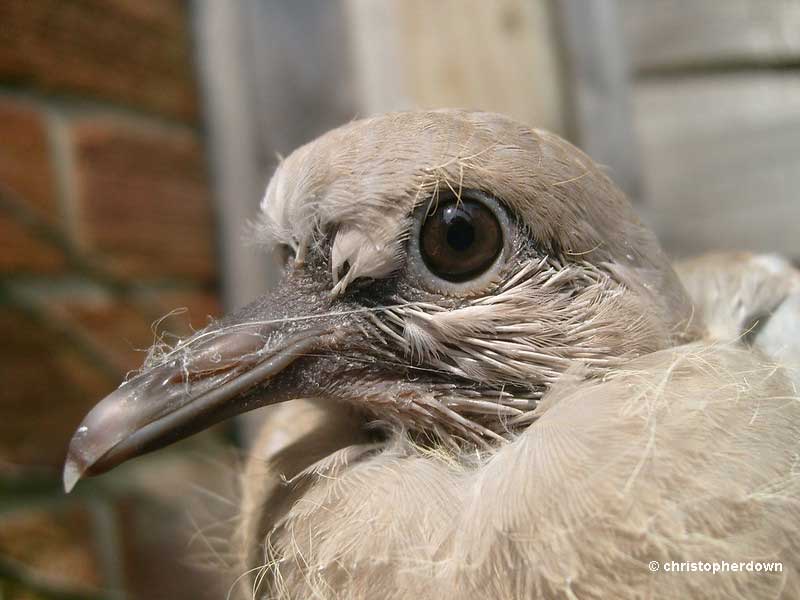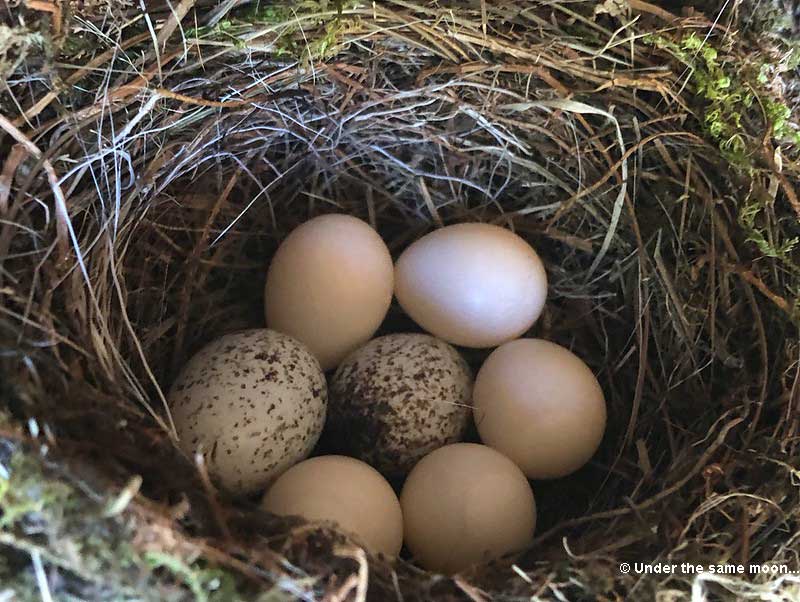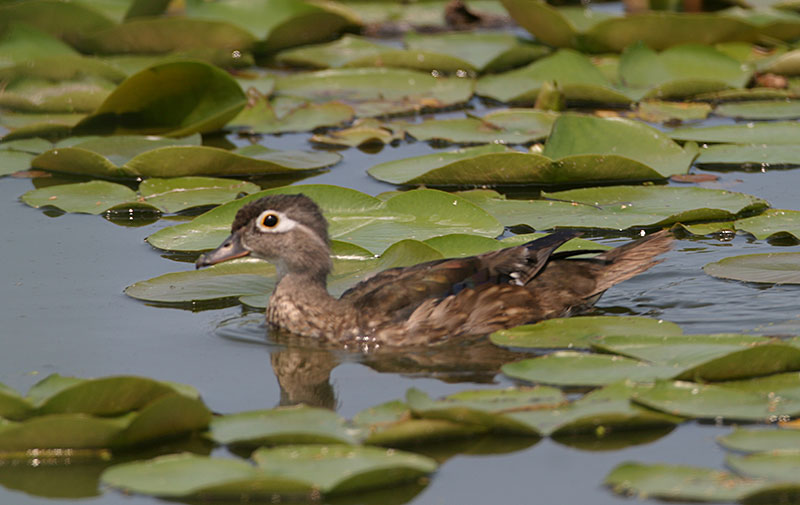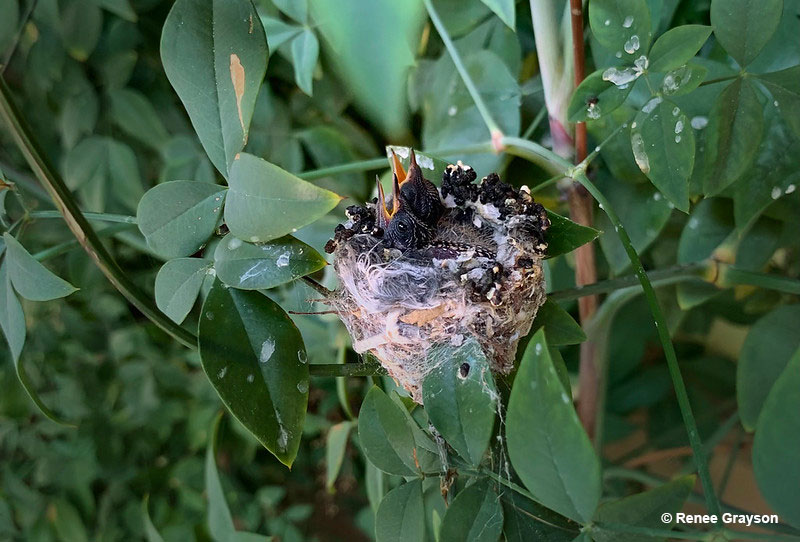
There comes a time in all creatures’ lives when they are ready to reproduce – find a partner and have babies that guarantee the survival of a species. Birds are no different.
Unlike us, most animals – including our avian friends – have little choice about it. Once they reach a certain age, their instincts kick in, and birds start breeding, nesting, and egg-laying.
But when does this happen? At what age do they start laying eggs?
Let’s break through that shell!
On this page
When Do Birds Lay Eggs?
Each bird needs to reach sexual maturity to lay eggs. That usually means it has molted, getting adult feathers and other features as well.
While each species is different, they all start their lives as hatchlings, then nestlings (which is the period after hatching, when baby birds stay in the nest), and then as fledglings, which is usually when they leave the nest. However, even as fledglings, they are still considered to be juveniles and not adult birds.
Related: Baby Birds – From Hatching to Adulthood
For example, baby ducks stay in the nest only for around a week, after which the ducklings move on to bodies of water with their mother. Similarly, baby swans stay in the nest for around a week, but they can go to so-called ‘test swims’.

This nest belongs to an Eastern Phoebe, whose nest has been used by a Brown-headed Cowbird (brood parasites).
Sexual maturity comes at many different times for different birds. Common Quails start laying eggs at only 6-8 weeks old. On the other hand, the majestic Californian Condors don’t breed before they reach 6-8 years of age.
When you look at that span, simply saying that nesting ages are variable almost seems like an understatement!
Can a Baby Bird Lay an Egg?
The question “Do baby birds lay eggs?” may sound a bit off, right? However, if you’ve been wondering about this, there’s nothing to be embarrassed about – the animal kingdom is weird.
There are quite a few examples of species reproduction by physically immature individuals that retain larval or juvenile characteristics. Scientists call these morphological “babies” with reproductive abilities Neotenic or Paedomorphic.

Young birds do not lay eggs until they reach sexual maturity.
The very reproduction of paedomorphic animals is called paedogenesis.
The most famous example of neoteny and paedogenesis is the axolotl. This overgrown “baby” salamander, closely related to the Tiger salamander, stays in the larval form for good and normally reproduces to create more axolotls.
In insects, we find paedomorphism in certain beetles, scale insects, gall midges, and more. And wait until you hear about aphids – they are born pregnant!
So, if axolotls can do it, can birds do it too?
Fortunately for all of us prone to nightmares, there are no giant bird chicks laying eggs out there. True paedogenesis or paedomorphism doesn’t exist in the avian world.
However, there is a peculiar case of neoteny in birds. All primitive flightless birds (Ratites) actually have neotenic features.
Flightless Birds are Juvenile-Like – But Not Paedogenic
Current bird evolutionary theory states that the flightless ratites – such as ostriches, emus, and kiwis – essentially have neotenic (juvenile-like) bird traits that were useful throughout evolution and thus favored by natural selection.
Besides the obvious lack of flying abilities and undeveloped wings, flightless birds exhibit body proportions similar to chicks of flighted birds.
Also, their unusually fluffy feathers have a similar structure to juvenile downy feathers of other birds – but of course, they’re significantly larger.
Still, all these birds are not paedogenic in the true sense of the world. They reproduce sexually, and the chicks change as they grow, and no – the chicks can’t lay eggs. In conclusion, true baby birds can’t lay eggs.
When Do Birds Lay Eggs – Season-Wise?
If you wish to find out “when,” as in “what season,” do birds lay eggs, here’s the answer.
Related: What to do if you find a baby bird
It may not surprise you that most birds nest and lay eggs in the spring. The warm weather and the abundance of food make most birds go into love mode during springtime. They are hormonally conditioned to do so. We know this time as the breeding season.
But it doesn’t end with the spring. Some species of birds will make at least one more nesting attempt if the conditions are right.
- Dark-eyed Juncos can have as many as three broods per year.
- American Goldfinch is the late bloomer when it comes to nesting season. It only starts nesting in mid-to-late summer, sometimes even in September.
- Common Crossbills, native to Europe bravely nest in the wintertime – even during January!
- The Great Horned Owls choose slightly defrosted conditions in comparison to crossbills and usually nest from mid-February and into March.
- Loving never stops for feral Rock Pigeons – they will nest as much as six times per year, whenever the weather is not cold to freezing.
How Do Birds Lay Eggs?
Here is a quick overview of the egg-laying process in birds:
- Birds have a cloaca – a single opening for waste, eggs, and sperm.
- The fertilization in all birds is internal, meaning an egg is fertilized inside the female.
- Female birds form a yolk inside their bodies.
- The male passes his sperm through the cloaca and fertilizes the egg.
- The yolk develops into a hard-shelled egg that is then laid in the nest.
- Inside the egg grows a thin, liquid-filled membrane called the amnion. Amion forms a sac that holds the growing embryo.
- The embryo of the fertilized egg develops into a baby bird during the incubation period.
However, the formation of eggs can happen even without breeding and fertilization.
Do Baby Birds Lay Eggs – Frequently Asked Questions
At what age do birds start laying eggs?
The age at which birds start laying varies immensely across species. Here are some examples.
- Quail can lay eggs when only a month and a half or two months old (probably due to the exceptionally short average lifespans of 1.5 years).
- Common chicken (hen) starts laying when 4-8 months old.
- Great Tit is ready for laying its first clutch at around one year old.
- Bearded vultures reach sexual maturity when 5-7 years old and usually successfully nest only when they are 8 or 9!
Do birds lay eggs without breeding?
Once the ovulation has been triggered, the egg will proceed from yolk to fully formed egg over the course of several days. It must inevitably come out of the the body – be laid – even if the bird has not bred.
We commonly observe egg laying without breeding in hens or pet parrots. However, in the wild, laying unfertilized eggs is rare because creating eggs is a significant energy investment for the female.
To conclude, ovulation and the subsequent egg-laying in birds do not need a male, but naturally, the eggs won’t be fertile without breeding. Or…?
Can Bird Chicks Hatch from Unfertilized Eggs?
Parthenogenesis is a type of reproduction where females reproduce with no male involvement and no fertilization.
In true parthenogenesis, the female clones herself to produce daughters genetically identical to her. Remember mentioning the newborn but pregnant aphids? That’s a clear case of parthenogenesis. Males are out of the picture.
We find this self-cloning strategy even in vertebrates, and reptiles dominate the spotlight with 39 parthenogenic species.
On the other hand, birds do not reproduce parthenogenically – with one odd exception.
We find the only documented cases of avian parthenogenesis in turkeys, although the mechanisms behind the phenomenon are still not fully explained. Nevertheless, up to 14% of turkey eggs develop this way!
However, to make the case even stranger, all “cloned” turkey offspring are males; the female turkeys don’t manage to “clone” themselves as in other, true parthenogenic species.
How do you know if a bird is laying eggs?
All female birds undergo a series of physical and behavioral changes that prepare them for egg-laying.
For example, many birds will start eating more and drinking more, and seeking out calcium and mineral sources, all to replenish the losses due to egg formation. Also, they engage in nesting material search and preparations and are generally on high alert.
Also, if you have a female pet bird, you will be literally able to feel the physical changes when you hold her. She’ll become heavier, and her abdomen will become larger and harder due to the eggs inside. Her bum may also become enlarged because the body is getting ready to pass the eggs.
Behavior-wise, the female may be more fearful and protective if you reach out for her cage and spend more time on the cage floor instead of perching.
Lastly, if you see a female bird sitting on the nest, she has probably gone broody – she has stopped laying and is now incubating the eggs.
What triggers egg-laying in birds?
Different bird species have different triggers for egg-laying. However, for most birds, it is the changes in light. Increased light exposure that comes with longer daytime in spring triggers the birds’ reproductive hormones and egg production.
The chicken egg industry exploits this mechanism by keeping the birds under artificial lights year-round – otherwise, the hens wouldn’t be laying in the cold season.
Can birds randomly lay eggs?
Producing each egg is “expensive” for a bird – it costs a lot of nutrients and energy. Thus, wild birds can’t afford to waste them and rarely lay eggs randomly. Egg laying always occurs within the breeding and nesting period.
Birds in captivity may face the issue of continuous egg-laying, which may seem random, but it is not.
Due to the lack of natural light cycles (under artificial lights), where prolonged lighting creates an illusion of the “eternal spring,” females are continuously triggered to produce eggs. Also, since the eggs never hatch if unfertilized, the hormonal stimulus to stop laying is missing. Egg-laying can go on year-round, clutch after clutch.
Continuous egg-laying can quickly lead to calcium depletion and numerous health issues. Keeping the cage covered for 12-14 hours a day can break the cycle, as well as nest removal and other discouraging actions.

